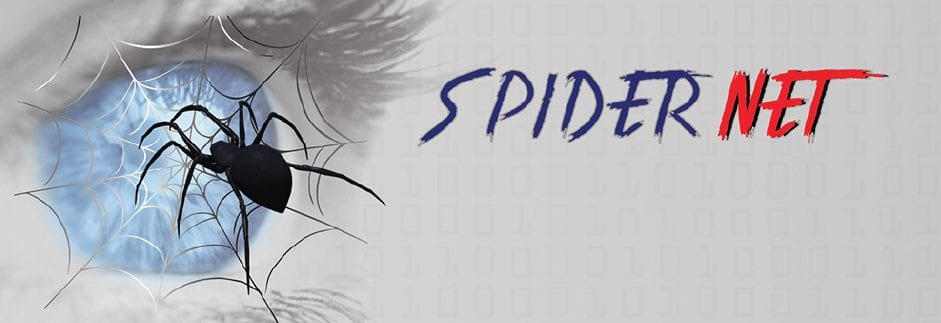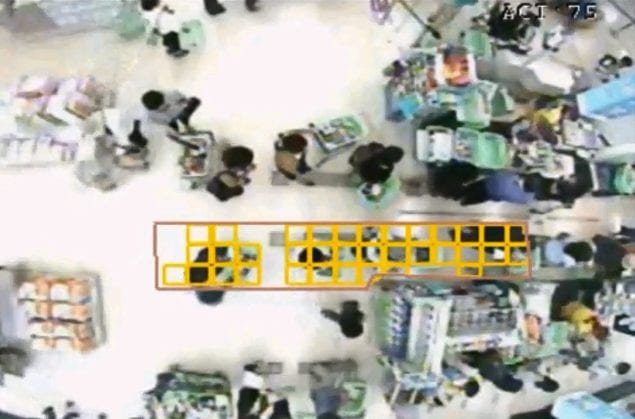SPIDERNET Analytics Systems
An analytical system, development of a Mivtzar Technologies.
Recommended by the insurance companies.

Identify the break-in even before it is performed
SPIDER NET
The Spidernet analytics system developed by Mivtzar uses sophisticated IP cameras connected to a powerful analytics computer. Spidernet enables smart analysis of photographs using a dedicated algorithm. It enables break-in/penetration detection before it even happens by delineating and tracking sensitive areas on the image and using real-time indicators.
Before we discuss the differences between analytics technology and the VMD technology that’s more common in this field, we must understand how a security camera operates. Ordinary security cameras record motion in the secured area at which they are pointed and are programmed to “watch” for changes in the static image. That is, as soon as a change occurs within the image, the camera sends an alert and begins to record what’s happening in front of it.
This technology causes several essential problems in the organizational security system. Beyond the fact that it doesn’t know how to ignore small objects and animals, it thinks that its job is to begin operating after any small change to the pixels in the image and causes quite a few false alarms. And so quite a few alarms are raised over the motion of clouds, heavy rain, or a bird passing through the “secured area.” Because the system is almost constantly in alarm mode, it records everything and “drowns out” the original thing being recorded.
Defining the Rules of Analytics
On the other hand, analytics technology in security cameras enables smart analysis of the image using a dedicated algorithm. This refers to IP cameras on which is installed analytics software that enables setting rules and alerts on the screen.
After installing the camera, its analytics are programmed based on the security requirements and the features of the secured space, while accounting for all the environmental conditions. Stipulating these rules and displaying polygons on the screen allows one to distinguish real movement happening in the camera’s field of view, nearly eliminates false alarms, and activates the security system before the break-in takes place.
Analytical Identification System (Spidernet)
Improvement to security and identification capabilities against unwanted actors using a smart surveillance system which can be programmed with various security and alert features, which broadcasts “smart” information to the command center to make intelligent decisions. The system boasts survivability in cases of deliberate damage or errors.
Principle features
- l Flexible system which allows increased channels with additional licenses.
- l Can be connected and integrated into all types of cameras.
- l A variety of rules defined at the camera and channel levels.
- l Alerts when the camera is blocked.
- l Synchronization of alerts with the command center program.
- l Interfaces with the site’s PA system.
Analytical Identification System Capabilities – Spidernet
The Spidernet system has a variety of advanced identification capabilities, including programmability for customizing the system to the client’s needs. The system can identify objects by size, and a maximum and minimum size can be defined (for example, if the system identifies a cat, it will not sound the alarm). Similarly, identification and alerts can be defined based on the object’s speed and direction of motion. The system allows for programming warning areas, including defining variables within and between these areas, such as several polygons and behavioral rules for each polygon, or crossing several polygons. Using these definitions, one may define secured areas and buffer areas that require a partial response or none at all. The system is advantageous in that it can identify objects in all weather conditions, with an identification range of 100 meters, and verification is done using single-valued video.
Rules which Can be Defined in the System
- Crossing between areas by direction
- A belonging “left behind” for longer than a fixed time
- Areas forbidden from loitering.
- High-traffic areas.
- Combinations of rules and conditions between them.
- Analytical identification system functionality – Spidernet
- The system broadcasts a sign of life check every five seconds to check that it’s in working order
- The length of video recorded before and after identification may be set
- Interfaces with all types of IP, AHD, and thermal cameras
- Ability to perform external commands on identification.
- Public address system.
- The system includes:
- Installation in a hardened, secured closet.
- Protection of the closet and interfacing with the on-site alarm system.
- Integration of a cellular router and 4th-generation modem as backup.
- UPS for backup of all system and communications components.
- Adapter for public address and audio at the site.


